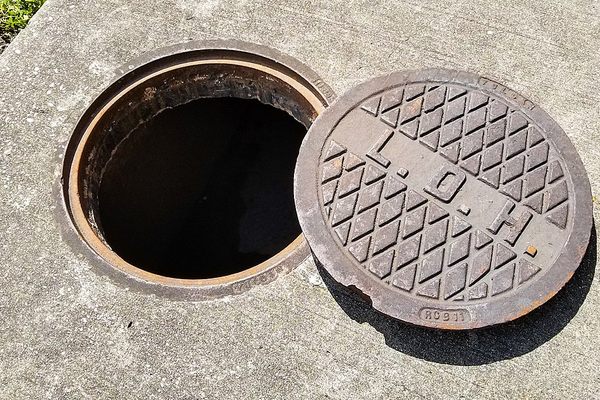What an Enormous Fatberg Can Tell Us About How Londoners Live
An “autopsy” on the congealed behemoth illuminates what people flush down the drain.

This much is obvious: The South Bank fatberg is gnarly. Like its many cousins clogging other sewer pipes around London, this lumpy, goopy plug formed glob by glob—an accretion of the oils and odds and ends that residents flushed down the drain. Fatbergs are stomach roiling, nose-prickling reminders that our habits have consequences, and that “out of sight, out of mind” is a hollow promise, financially and otherwise. (Across the U.K., the cost to extract fatbergs exceeds £80 million a year.)
Taking a closer look at these festering beasts is a putrid business, but it offers clues about the private lives of people above ground. In collaboration with the local water company tasked with removing the sludgy behemoth, the British TV station Channel 4 is doing just that, with a new special called Fatberg Autopsy: Secrets of the Sewers.
Fatbergs are occasionally speckled with pieces of discernible trash—the serrated, purple-and-orange wrapper of a Double Decker candy bar peeks out from a chunk of the Whitechapel fatberg, which is currently on display at the Museum of London—but they mostly look like grayish blobs. To understand the composition, researchers have to go more granular.


In front of Fatberg Autopsy’s cameras, teams dissected segments of the South Bank fatberg as if it were a subterranean owl pellet. In a damp-looking warehouse, they put it through the forensic paces, sorting syringes and mangled bits of plastic into trays illuminated by harsh lights. Scientists at Cambridge and the University of York also conducted mass spectrometry analysis on a wedge weighing five metric tons. Most of the fatberg’s heft came from cooking oil and grit, but the researchers detected traces of cocaine, MDMA, and salicylic acid, found in many anti-acne creams. They also found ostarine, a muscle-promoting drug banned by anti-doping agencies.
This sample doesn’t tell the whole story, cautioned John Wilkinson, a researcher at the University of York’s environment department and one of the scientists in the special. “When you put a bucket down into the sewer and bring a few milliliters of water back up, what’s in those few milliliters is not necessarily representative of what’s underneath the whole of London,” he told The Guardian. “Because you get a peak for a couple of compounds, I think it’s a bit dangerous if you use that data to draw conclusions on the whole city.” It’s also impossible to tell whether the chemicals entered the sewer through bodily excretions, or if someone dumped a bottle and flushed its contents.
The sewer may not be an entirely reliable narrator, but it does tell the story of how people live now. The special is unabashedly, gleefully dramatic, but it’s a reminder that above-ground actions have downstream consequences. “Please only flush the three Ps (pee, poo, and toilet paper),” said Thames Water waste networks manager Alex Saunders, in a news release. “Don’t feed the fatberg.”









Follow us on Twitter to get the latest on the world's hidden wonders.
Like us on Facebook to get the latest on the world's hidden wonders.
Follow us on Twitter Like us on Facebook